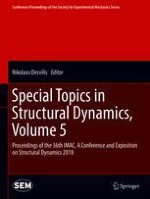2019 | Buch
Special Topics in Structural Dynamics, Volume 5
Proceedings of the 36th IMAC, A Conference and Exposition on Structural Dynamics 2018
herausgegeben von: Nikolaos Dervilis
Verlag: Springer International Publishing
Buchreihe : Conference Proceedings of the Society for Experimental Mechanics Series
